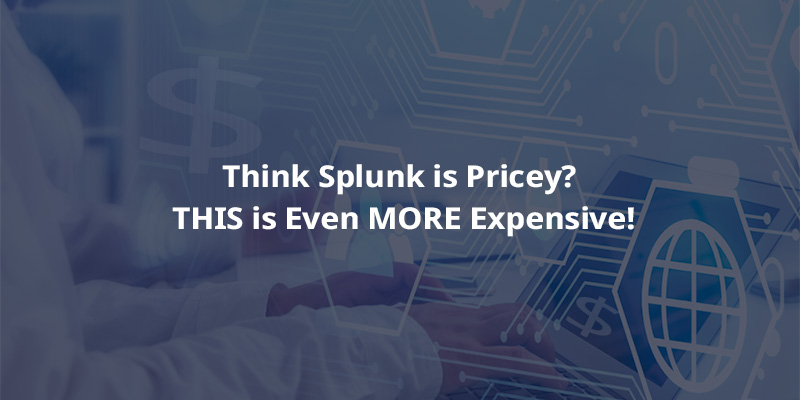What Does Splunk Cost?
When a business outgrows its data analytics capabilities, leadership has a couple of options: maintain the existing legacy or homegrown system by modifying and updating it to meet growing needs, or replace it with an all-new platform. While it may seem like the financially responsible decision is to work with what you’ve got, upgrading your current system in-house rather than starting over, that “frugal” decision is actually likely to cost far more in the long run.
When we talk with customers about Splunk, the first question we often hear is “How much will it cost?” And we get it. But perhaps more important than upfront cost is the ROI. How much will this investment save the business in terms of money, time, and frustration? How much will it expand the company’s potential to increase revenue, expand the customer base, or enhance our brand reputation?
Consider the business factors that have caused your current system to struggle. Growth is a likely one: as you’ve increased activity by growing your customer base, expanding your markets, adding new products and services, etc., your system may be balking at the added complexity and volume. Agility is another: as the business landscape continues to evolve along with customer preferences, you need to be able to spot opportunities and make business decisions quickly, but your legacy system requires too much manual intervention to act fast. In order for the system to truly support growth, it needs to be agile, efficient, secure, and transparent. In order to get there, it needs some serious work.
Next, consider the IT resources that would be required to manage these updates in-house. Making significant changes to outdated systems almost always requires significant coding, which means hiring (and paying) engineers or “repurposing” current team members, taking them away from the core of their work in favor of system maintenance. There may also be equipment costs, such as additional servers to manage growing volume.
How about the time required to make these updates? While the IT department gets the new-and-improved system up to speed, the rest of the team will likely have to handle a good portion of the system’s work manually, resulting in delays, errors, disgruntled customers, and missed growth opportunities.
Between the talent and equipment expenses and the opportunity costs of delays during the upgrade period, the cost of maintaining the old system adds up quickly. And it’s a good bet these changes won’t be a one-time initiative. As the business continues to grow — and the market continues to shift — more frequent adjustments will be needed, incurring the same expenses every time. And eventually, rehabbing old features and adding new ones piecemeal will lead to a system so cobbled together that it becomes unreliable and incompatible with the other systems and processes driving the business.
The Upfront Investment Starts to Look Pretty Good
As with any quality enterprise software, Splunk does require a significant investment, but once you factor in the hidden costs of building and maintaining DIY systems, or keeping legacy systems going, it becomes clear that Splunk is the more financially savvy investment in the long run. Splunk is designed specifically to power growth, providing real-time visibility and actionable insights around company data and leveraging machine learning to enable faster, more focused business decisions. All with minimal downtime and manual intervention.
At Conducive Consulting, we’ve been helping customers maximize the ROI of their Splunk investment since 2006. If your organization is looking to replace an outdated data analytics platform with a new system that will provide the efficiency, agility, and transparency required for serious growth,  today or book a complimentary demo to learn more.
today or book a complimentary demo to learn more.



